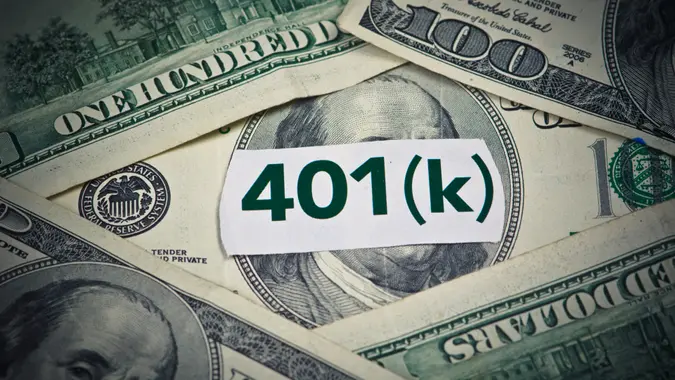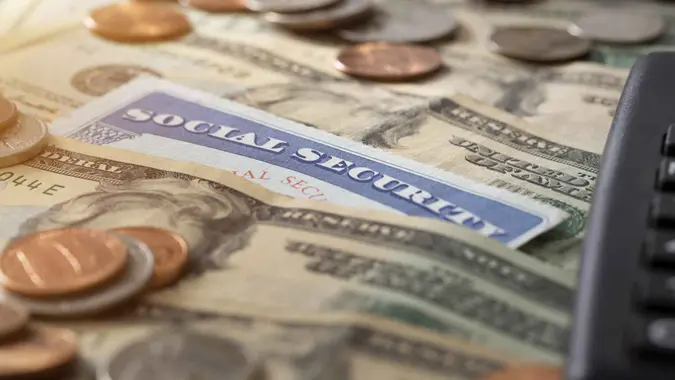6 Genius Ways To Grow the Money in Your 401(k) in 2025

Commitment to Our Readers
GOBankingRates' editorial team is committed to bringing you unbiased reviews and information. We use data-driven methodologies to evaluate financial products and services - our reviews and ratings are not influenced by advertisers. You can read more about our editorial guidelines and our products and services review methodology.

20 Years
Helping You Live Richer

Reviewed
by Experts

Trusted by
Millions of Readers
Your 401(k) plan is likely to be one of the biggest contributors to your long-term wealth and security. For this reason, it’s important to maximize its potential.
4 Unusual Ways To Make Extra Money That Actually Work
While automating your monthly contributions to your 401(k) is a great start, there are plenty of additional ways that you can boost your account value rapidly.
Here are some ways to be smart about your 401(k) contributions so that you can help ensure you’ll reach your retirement savings goals.
Add Your Tax Refund
Your tax refund is a great source of additional funding for your 401(k). As it amounts to a source of “extra” money that shouldn’t be in your monthly budget, diverting it to your 401(k) shouldn’t feel like you’re taking any money out of your own pocket to make the contribution.
In that sense, it’s a painless way to boost your 401(k) balance. Putting your tax refund directly into your 401(k) is also a good way to protect against spending it on unnecessary discretionary items.
Boost Your Contribution Percentage Regularly
It can be hard to immediately start putting 15% of your income into your 401(k) plan, particularly if you’re just getting started. But a great way to get to that level is to boost your contribution percentage regularly, in small increments.
Say, for example, that you are comfortable with socking away 5% of your income but feel you can’t make the jump to 15% overnight. Start by increasing your contribution by 1% per year or even per every month, if possible.
Before you know it, you’ll be maxing out your 401(k) while hardly noticing the incremental deductions to your paycheck. If you’re earning $50,000 per year, for example, a 1% increase in your contribution rate will only amount to $500 per year, or about $40 per month.
Get Your Full Employer Match
Most large employers match a portion of their employees’ contributions to their 401(k) accounts. This is effectively free money, and it can go a long way toward boosting your long-term 401(k) balance.
Thus, it’s imperative that you contribute at least as much as you need to in order to get your full employer match. Many employers will match 50% of the first 5% of your income that you put into your account, for example. In that scenario, you’ll want to sock away at least 5% of your paycheck to earn that 50% boost.
Here’s how much of a difference this could make in your long-term retirement savings. If you were earning $50,000 per year and setting aside 5%, that would amount to $2,500 annually. If your employer matched 50% of that amount, another $1,250 would go into your account every year. After 30 years of earning an 8% return, you’d have roughly $465,000 vs. about $310,000 with no employer match.
Choose the Right Investments
It might go without saying, but the better your investments can perform, the bigger your nest egg will ultimately be.
While it’s impossible to predict exactly how your investments will do, a good first step is to choose options that are in line with your financial objectives and risk tolerance. For example, if you want long-term growth out of your 401(k) account, as most investors do, you’ll want to invest in options that offer the best chance for capital appreciation, such as stocks.
Although stocks can be volatile over the short run, and bear markets can drop values by more than 20%, the longer your holding period, the more likely you’ll be a winner with stocks.
The S&P 500 has actually never lost money over any 20-year rolling period, so if you’ve got a long-term view, the risk of owning equities drops dramatically.
Avoid Fees
In any investment account, including a 401(k) plan, fees are a killer.
Even a 1% fee could result in a 28% reduction in your ultimate retirement plan balance, according to the U.S. Department of Labor. That’s why it’s critical to reduce fees wherever possible.
If your overall plan charges high fees, consider talking with your human resources department about what they can do to better serve their employees. If you can’t make any progress on that front, choose investment options that provide the combination of the best return with the lowest possible fees.
What may seem like only a small reduction in fees can add up to a significant amount of savings over a decades-long investment period.
Contribute Your Bonus
Just like your tax refund is a good source of “free money” to put into your 401(k) plan, so too is your annual bonus.
Your bonus shouldn’t be part of your monthly budget, just like your tax refund, so it’s not money that you should be counting on to fund your day-to-day existence. This makes it a perfect candidate to sock away into your long-term investments, like your 401(k) plan.
An extra $3,000 per year invested at 8% for 30 years could translate to an additional $367,000 in your 401(k) account.
 Written by
Written by  Edited by
Edited by 

























